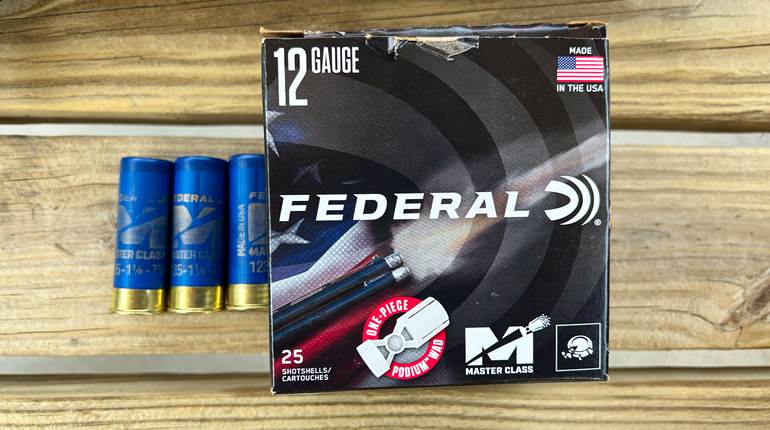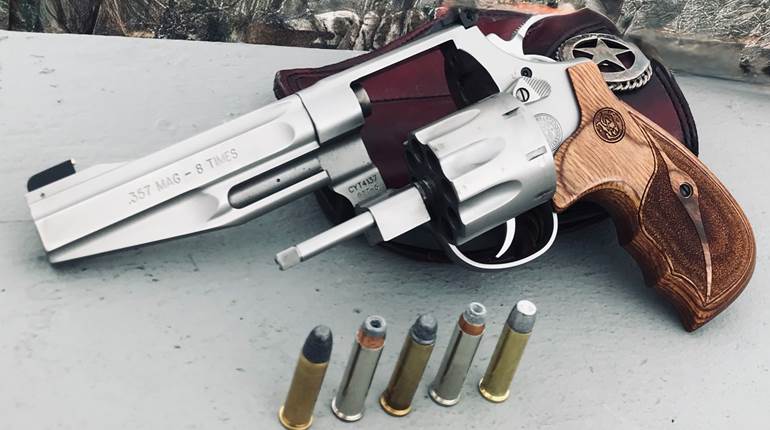
Gun and ammo manufacturers, like all manufacturers, are in a constant battle of developing new and innovative products to either retain or increase market share. This kind of work is quite speculative, because there is no guarantee that they will see a return on an often expensive investment. Nonetheless, they are compelled by their competition to continue this development process.
Every once in a while, however, all this research and development comes up with something that offers a real improvement, even if only within a niche market. Varmint and pest shooters constantly pine for something that shoots flat, is accurate and has little recoil. In 2004 Hornady and Ruger entered into a collaborative project to produce a varmint rifle and cartridge that satisfied, at least for a while, the varminters. The result was the .204 Ruger cartridge, and while it hasn’t set the world on fire, this cartridge has proven itself quite effective in the varmint fields.
Unlike some of the new cartridges, the .204 Ruger actually satisfied the objectives outlined above, if until something else comes along to dethrone it. There was a need for speed, accuracy and better long-range performance. The .22 cal. had been pretty much exhausted with the .22 Hornet on the slow end and the .22-250 Rem. and .220 Swift at the top end. While the .22 Hornet was nice, accurate out to about 175 yards and relatively quiet, the top two speed demons recoiled too much for most shooters to see their impacts. So we were looking for 3,800 to 4,000-plus f.p.s. in a 38- to 40-plus-grain without the disturbing recoil. The obvious choice was to have a smaller diameter bullet, say, .20 cal., with the relatively heavy and longer bullets that could sustain the velocity better than .22-cal. bullets and buck the wind better.
 The .204 Ruger centerfire rifle cartridge.
The .204 Ruger centerfire rifle cartridge.
Most new cartridges are based upon existing cartridge cases that are modified to a newer purpose. The reason is simple: no need to reinvent a case when an existing case will satisfy. New tooling is expensive. So one of the cases chosen in the development process was the .222 Remington Magnum. Its capacity is the largest of any American .223 Remington-family of cartridges with smaller .375" to .376" case head diameters. The .222 Rem. Mag. came about during the 1950s when Armalite was working on a new, lightweight round to chamber in a new-style rifle. It had moderate success with the commercial sporting market, but the .223 Rem. (5.56 mm NATO) cartridge bested it out because of a vastly larger supply of ammo and reloading components.
So, when Ruger and Hornady began developing the .204 Ruger, Hornady, as part of the development process, tried using what was then a non-canister powder—meaning unavailable to handloaders—that delivered the energy needed for very high velocities but also contained a de-coppering agent that reduces the amount of copper fouling in the barrel. Copper fouling increases dramatically as the bullet diameter is reduced and the velocity increases. This powder, known as SMP746, was made by Primex and used by military ammo manufacturers. With this powder, Hornady was able to achieve muzzle velocities in the 4,225 f.p.s. range with a 32-grain, .20-cal. bullet with a muzzle energy of 1,308 ft.-lbs. in a 24" test barrel.
However, lot-to-lot differences in SMP746 that was acceptable to the military for its purposes were not satisfactory for the compulsive accuracy aficionados in varmint shooters. It took Hodgdon to trim those lot-to-lot variances and produce a canister-grade powder now known as CFE 223, the same powder, but with closer tolerances. I have used nearly all of the CFE (copper fouling eliminator) powders from Hodgdon, including CFE 223, and they have all filled the bill well in terms of accuracy, velocity and the minimization of copper fouling.
 The cartridges of .223 Rem. (left), .204 Ruger (center) and .22-250 Rem. (right) compared.
The cartridges of .223 Rem. (left), .204 Ruger (center) and .22-250 Rem. (right) compared.
Alan Roberts is a longtime friend of mine and a dedicated varmint shooter. He started using the .204 Ruger not long after it came out and quickly found that the 24-to 32-grain bullets that were initially offered may have had spectacular velocities, but downrange where the targets are the velocities of these lightweight bullets are shed quickly. Too, they were then more susceptible to wind. He now prefers the 40- to 45-grain bullets that, while they may get out of the gate a bit slower, 3,625- to 3,800 f.p.s. and 1,167- to 1,283 ft.-lbs. of energy, they shed that velocity much slower and yield a significant flattening of trajectory out to 500 yards. Alan has found that with these heavier bullets, a 1:10" twist will stabilize them better than the normal factory 1:12" twist.
The popularity of the cartridge is reflected in the number of rifles chambered for it. Kimber has chambered its Varmint and Pro Varmint rifles in .204 Ruger, Remington chambered the Model 700 SPS in it for a time. Ruger chambers its Hawkeye Long Range Target and Predator rifles in .204 Ruger. Thompson-Center chambers the .204 Ruger in its Compass Rifle for the budget minded, and Savage has it in its 110 series—Apex hunter, varmint; 110 hunter, varmint and Model 12 Varminter LRPS. You can also find the .204 Ruger in an AR platform—Wilson Combat’s Recon Tactical was one of the first—and now several AR builders can supply you with rifle and/or components for your own build.
Though I am sure there are several who have successfully used the .204 Ruger on deer, the cartridge is really suited for smaller game up to and including coyote. The fragility of its bullets means that for reliable, humane kills it would have to slip between the ribs of something like a deer. Most states require a .22 or larger caliber for deer anyway.
The .204 Ruger has successfully bridged the gap between the .223 Rem. and the .22-250 Rem. and .220 Swift. Its trajectory is more like the latter, while its recoil is more like the former. For the dedicated varmint shooter or smaller predator hunter it has turned out to be a real winner.





































